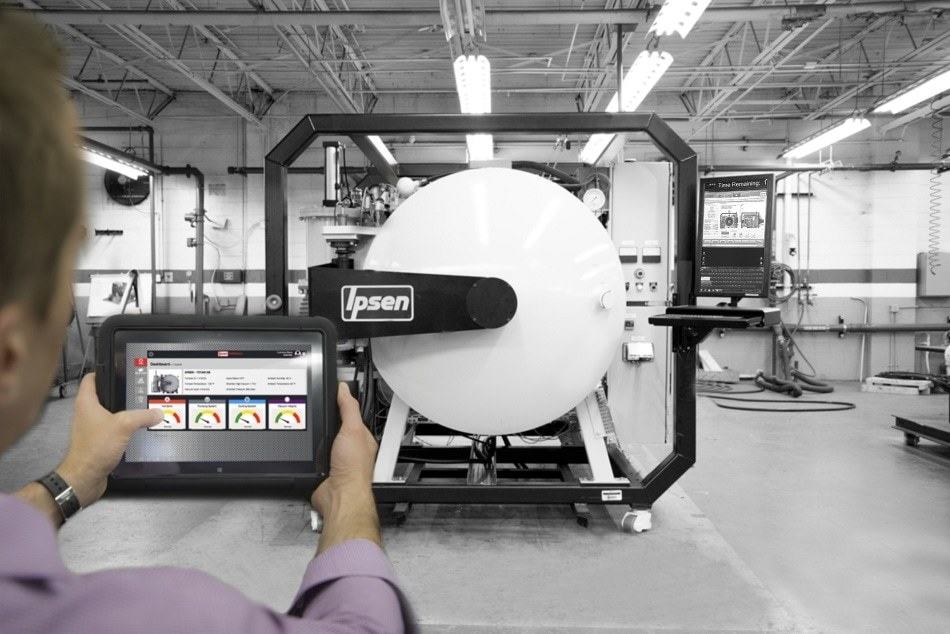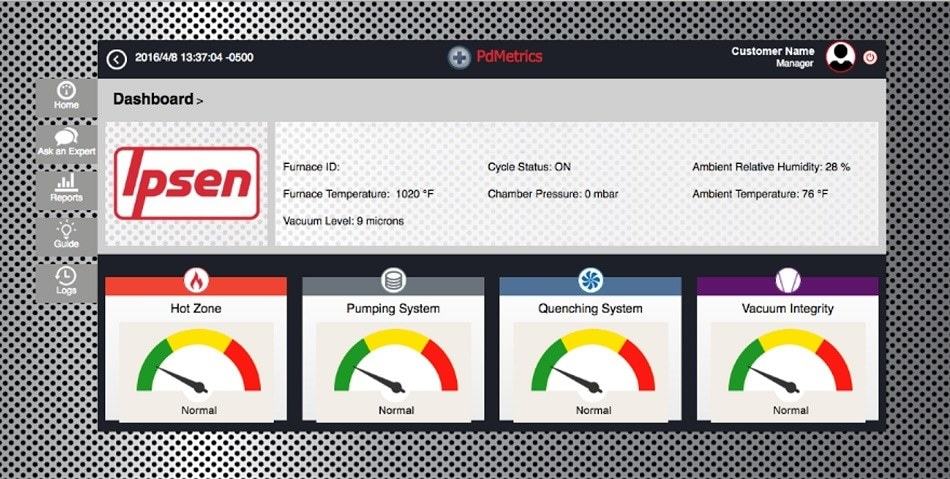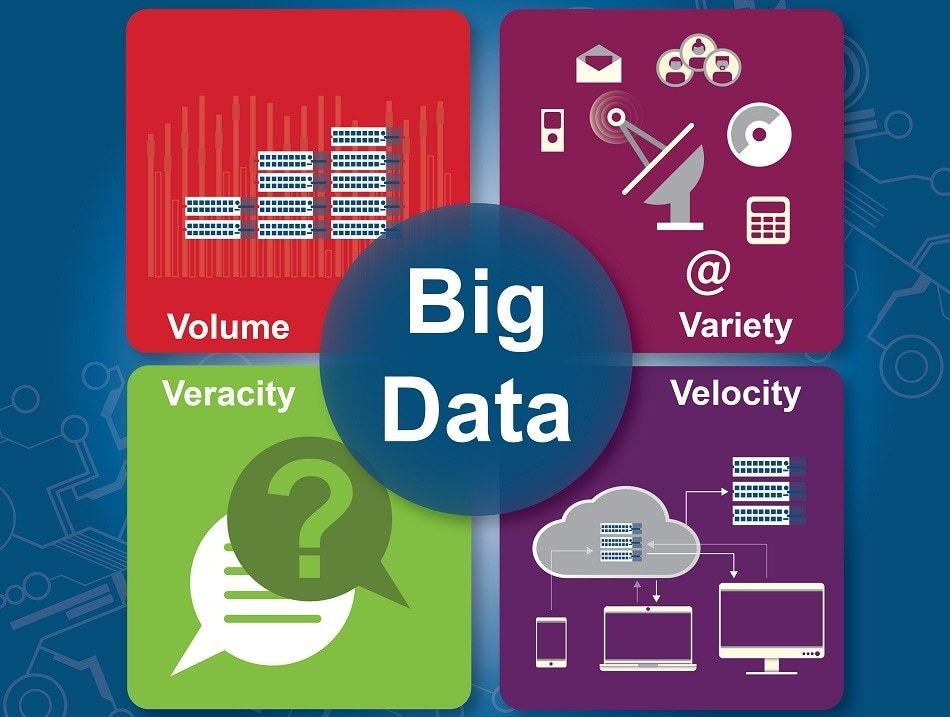In the heat treatment industry, unexpected or unnecessary furnace downtime can result in a significant increase in manufacturing costs. Ipsen has developed a new tool that allows users to integrate predictive maintenance with their heat-treating system – the PdMetrics® software platform. PdMetrics measures the health and integrity of the furnace, allowing anomalies to be spotted before they cause failure and removing the need for unnecessary routine maintenance.
AZoM spoke to Aymeric Goldsteinas, Product Development Manager at Ipsen, about their new PdMetrics software platform, the benefits it can bring to furnace operators and the future of Internet of Things technology in the manufacturing industry.
What are the benefits of integrating predictive maintenance with heat treatment equipment?
Predicting when maintenance is needed and preventing failures before they occur carries several benefits.
These include avoiding high-cost events, increasing furnace uptime and reliability, reducing the need for frequent maintenance/repair and minimizing the maintenance burden placed on shop personnel by unexpected downtime.
However, the biggest benefit of integrating predictive maintenance with heat treatment equipment is the end result: a smart, connected furnace capable of monitoring in-service equipment to capture data that assists in refining furnace operations and reporting when service will be required. This in turn, helps furnace users plan ahead – whether that means scheduling the necessary personnel to perform maintenance or ensuring the necessary furnace parts are in stock.
Furnace manufacturers that utilize predictive maintenance are also able to gather data on the furnace’s overall performance. This assists them with the continuous improvement of their products and future innovations.

PdMetrics can be securely accessed through an online platform, making the continuous observation of furnace health as simple as it can be.
Please, could you tell our readers about your PdMetrics platform?
PdMetrics was developed by Ipsen as a way for companies to create value from the wealth of data that is available – and currently unutilized – from their equipment and processes ran in the furnace. The ultimate goal is to help companies efficiently, and cost-effectively, reduce unnecessary downtime while also optimizing operations and securing a return on their investment.
With sophisticated monitoring and diagnostics, the PdMetrics platform integrates with critical systems to provide you with insights never before seen in the industry. This system securely connects to a network of integrated sensors on your furnace to gather data, analyze it, run algorithms and provide real-time diagnostics that improve the health and integrity of your equipment.
In addition to the real-time analysis and alerts the PdMetrics platform provides, an added service is Ipsen’s Diagnostic Support Center (DSC). Within the DSC, we securely analyze the data and look for anomalies and trends that may indicate the need for further actions. If needed, we will contact you directly with suggested next steps.
The PdMetrics platform also provides furnace users with several features: an Ask an Expert section for submitting a question to Ipsen, as well as Reports, Guide and Logs sections, which provide access to vital tools and resources and assist with the continuous optimization of furnace usage. In turn, all of these features interact and build off one other to create an integrated user experience.
Currently, the PdMetrics platform is available as a retrofit and/or with the purchase of a new furnace. In addition, it functions as a furnace add-on that is not integrated with the furnace PLC, meaning we can easily and quickly retrofit it to any heat-treating system, including non-Ipsen brand furnaces.
With this wide range of availability, we already have several PdMetrics platforms installed on operational customer furnaces.

PdMetrics can be retrofitted onto any furnace meaning it is also available to non-Ipsen customers.
What does the PdMetrics platform track and analyze?
The PdMetrics platform is designed to check for trend changes of numerous real-time data points that can be an early indicator of component or furnace problems.
With such a large system, there are a number of subsystems and key parameters that PdMetrics must monitor, such as temperature, vibrations, pressure and so forth. The primary systems that such critical data is gathered from include the hot zone, pumping system, cooling system and vacuum integrity.
PdMetrics has been developed to:
- Monitor and compare several hot zone data points as it looks for any trends that may produce failures or reduced uniformity
- Analyze the pumping performance and trending vacuum levels, and then compare them to the ambient humidity conditions and leak-up rate
- Track the quench cooling motor vibration so it can provide an early warning of motor bearing or fan failure
- Check argon or nitrogen quench gas purity before every backfill or partial pressure cycle – this feature is optional
As an added bonus, any algorithm improvements are automatically pushed to the entire PdMetrics installed base. This means everyone that has PdMetrics installed on their equipment benefits as the software becomes increasingly intelligent and continues to learn from the experiences of the entire installed base.
As a result, your predictive maintenance software is always operating (and monitoring) at up-to-date firmware levels.

The PdMetrics platform measures and reports, in real time, data gathered on the health and integrity of the furnace’s hot zone, pumping systems, quenching system and vacuum integrity.
How does PdMetrics help provide an intelligent maintenance routine?
While we believe it is still essential to have a set preventative maintenance (PM) program and corrective maintenance capabilities, the PdMetrics platform builds upon existing maintenance and PM programs by providing an automatic maintenance reminder based on furnace performance and component usage.
As a result, rather than replacing hot zone components or checking for discoloration based on how much time has passed, users are notified when the hot zone indicates the need for such maintenance. This allows for the scheduled allocation of resources toward maintenance personnel, replacement parts and more.
In addition, whenever an action is required and/or the furnace experiences an error or anomaly, the software will maintain a log of all the errors or issues experienced.
Rounding out the ability of this software platform to provide an intelligent maintenance routine is its incorporation of calibration due dates. This means it takes note of when calibration will be needed and provides enough time to plan so that production can continue running without interruption.
What is Ipsen’s opinion on the Internet of Things? How important do you think the IoT will become in the future?
We believe the Internet of Things (IoT), whether it’s for consumer or industrial applications, has the ability to transform the ways companies operate.
As you may be aware, integrating complex physical machinery with networked sensors and software for data trending and analysis contributes to optimized operations, as well as product development, enhanced maintenance strategies, etc. However, it also opens the door to a multitude of possibilities and new opportunities for growth.
As more companies begin to realize the possibilities of the IoT, Ipsen believes we will continue to see it emerge in ways that drive and positively impact the productivity, efficiency and operations of industries around the world. Over time, physical devices and the manufacturing process will become one entity as the IoT and integrated machines become more prevalent. In other words, the process itself will eventually become part of the physical, integrated system.
Take industrial applications, such as aerospace manufacturing, for example. Currently, there are multiple steps and physical devices that make up the process of manufacturing a load of engine parts – machining, heat treatment, finishing, etc. With the application of the IoT, though, all of these processes and systems will become interconnected.
One day, you will be able to start with a usable part that knows who the end customer is, and once it is put into a machine, any abnormalities or changes from the standard process will be recorded. The technology will move the part from one process to the next as part of an automated system, and each integrated machine will track the necessary information. All of this data will then be accessible in a central location so the IoT system can analyze the manufacturing process and determine ways to attain peak efficiency, lean manufacturing objectives and more.
With this end goal in mind, Ipsen’s intention is that the technology we build and develop will, in the future, fit into other IoT systems – a piece of a much larger puzzle, so to speak.

‘Big data’ and the Internet of Things are set to have a huge impact on the manufacturing industry. Ipsen plan to be part of this change.
What role do you see the IoT and Big Data playing in thermal processing?
To best answer this question, we must first examine what currently happens in the thermal processing industry.
When your heat treatment furnace breaks down, you end up with unplanned downtime and costs until the problem is resolved; this includes potential overtime wages, the cost of rushing critical part shipments and more. As a result, being able to monitor key furnace parameters and critical data is becoming an essential requirement within the thermal processing industry as companies increasingly focus on reducing unexpected machine failures and, thus, maintenance costs.
This is where the IoT and Big Data come into play. If you approach the IoT from the aspect that it is, essentially, a multitude of internet-connected sensors attached to range of ‘things’, then Big Data is a term for all of the data these ‘things’ generate. This data can then be tracked, analyzed and acted upon to help improve operations, equipment performance, etc.
Predictive maintenance is one such analytics initiative in which the data generated is used to predict when machine failures might occur. You can also achieve smart factory integration with fleet analytics – for example, the PdMetrics platform allows you to see the health of all furnaces at all of your facilities globally.
All of this contributes to improved operations through predictive maintenance’s utilization of the IoT and Big Data. As a result, we believe the thermal processing industry will soon expect all heat-treating systems to be capable of leveraging the IoT and Big Data to perform such analysis as it is the future of industries across the globe.
What factors influence Ipsen’s decisions to innovate and expand your technology and equipment?
We are constantly asking ourselves what do our customers need, and how can we provide them with cost-effective solutions that address those needs? As many can attest to, customers – and really, every company regardless of their industry – are looking for ways to reduce costs while optimizing operations. For our industry, specifically, customers are looking for heat treatment equipment that provides efficient furnace operations in combination with shortened heat treatment cycles.
At Ipsen, we are constantly devoting resources toward not only developing improved, advanced furnaces of the future, but also toward achieving enhanced control and operation of today’s furnaces.
What can people do if they want to learn more about predictive maintenance and the PdMetrics software platform?
If you would like to learn more about PdMetrics, as well as the growth of predictive maintenance and the IoT, we recommend visiting our website.
Download Ipsen’s White Paper on Predictive Maintenance
About Aymeric Goldsteinas
.jpg)
Aymeric Goldsteinas joined Ipsen in 2009 as Product Development Manager where his primary focus is developing innovative furnace- and process-related solutions.
Through his extensive work in vacuum carburizing, high-pressure gas quenching, hardening, sintering and more, he is able to provide in-depth technical support and expertly analyze market trends.
Goldsteinas received his doctorate from the National Polytechnic Institute of Toulouse (INP) in Grenoble, France and graduated from the University of Marseille in France with a master’s degree in chemistry and technology.
Goldsteinas possesses a vast amount of experience, having received several patents and written numerous papers on the topics of low-vacuum carburizing and gas quenching. His expertise also extends to business development, marketing, process development and applied research and development.
Disclaimer: The views expressed here are those of the interviewee and do not necessarily represent the views of AZoM.com Limited T/A AZoNetwork the owner and operator of this website. This disclaimer forms part of the Terms and conditions of use of this website.